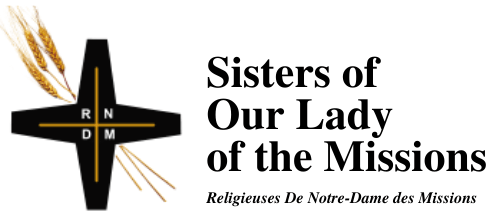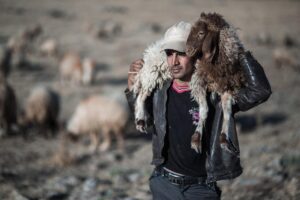Deuteronomy 4:32-34, 39-40 (RM) or Isaiah 6:1-8 (RCL); Psalm 33 (RM) or 29 (RCL); Romans 8:14-17; Matthew 28:16-20 (RM) or John 3:1-17 (RCL.)
It’s been said that God made humankind in God’s own image.
Then humankind returned the favour.
The Trinity, one God in three but not three gods, is probably the hardest theological nut to crack in the entire nut bowl of Christian thought. It’s understandable that humans struggled to get a grasp on it without lurching into something entirely different and not consonant with the ways Christians experience the living God, both in the past and the present. It’s understandable that humans would try to cast the nature of God in terms recognizable from their own human relations. But those relations are shaped by culture, society, beliefs about gender, and economic status among others. Do human relations shape God? What a silly question.
Apparently even the Scripture scholars who made the selections for Sunday readings were casting about for hooks to hang the Trinity on, so to speak. The only reading that the Roman Missal and the Revised Common Lectionary have in common is Romans 8. And that excerpt, from Paul’s most mature and most theological writing, shows a deep imprint of both gender and class.
Family arguments about inheritance, who gets how much of what and who gets nothing, are common enough in our own time as well, visible in advice columns and lawyers’ caseloads. Paul used the concept of descent, legal adoption, and inheritance as a teaching (or perhaps a pleading) tool in Romans.
He seems to be drawing straight lines from God via the Spirit to each Christian believer by designating them as those who will inherit from God eternal life with Christ. The analogy is with an inheritance promised via a sort of adoption by God. Adoption in the Roman Empire was a grueling and protracted legal process. Adopted persons lost all rights in their old family, and gained them in the new family. Any debts from their old life were cancelled. Even if blood children were born later, the adopted person retained inheritance status. The person was legally “new-born,” much as, in the church, the newly baptized were considered “newly born” into a permanent, living relationship.
The operative assumptions here are that:
1) there was something to inherit – in other words, the whole concept pertained to the propertied class,
2) males inherit from males, and
3) a substitute male heir could be determined legally with the same rights as a male descendant in the family.
It was only by way of very rare exception that women could plead a case to inherit their father’s goods or property, in those days and in that society.
I think we can do better. For that matter, our ancestors did better.
Trinitarian theology took many centuries to develop, but the profoundly relational character of Baptism was already present –never a static, but a perpetually dynamic relation. Perichoresis, a Greek term meaning “to dance around,” captures the reality and the mystery beautifully. The cosmos dances along with its Creator and Sustainer, filled with an uncreated Spirit, ever creating, ever renewing, ever interacting and alive, and yet ever one.
Joseph G. Donders, from his experience of dance as at the core of African culture, writes,
“God is not sitting on a throne as hard as a diamond, blinding as the sun, old as crystal, majestic as a dictatorial ruler. God is a life process. God is parent and offspring and their love. Loving, loved, lover. … That is what Trinity means. … [Theologians] found the answer, and they used a Greek word, a beautiful word: epichoresis. That means a dance.
They are dancing hand in hand, three in one … Not the dance around something. Not a dance around a golden calf, but the dance in which men and women, the old ones and the young ones, enjoy and dance and celebrate their lives together in peace and community without fear, not thinking of themselves alone. To be able to live that life, to be able to dance that song, we must be like them, those three in one, without fear of one another.”
© Susan K. Roll
Susan Roll retired from the Faculty of Theology at Saint Paul University, Ottawa, in 2018, where she served as Director of the Sophia Research Centre. Her research and publications are centred in the fields of liturgy, sacraments, and feminist theology. She holds a Ph.D. from the Catholic University of Leuven (Louvain), Belgium, and has been involved with international academic societies in liturgy and theology, as well as university chaplaincy, Indigenous ministry and church reform projects.





Thank you for highlighting that Trinitarian theology took many centuries to develop – and is still developing. I like the metaphor of dancing – Perichoresis – and the cosmos dancing along “with its Creator and Sustainer, filled with an uncreated Spirit, ever creating, ever renewing, ever interacting and alive …”. Such vitality!!!